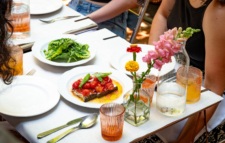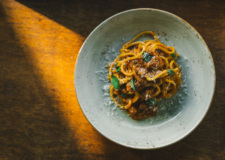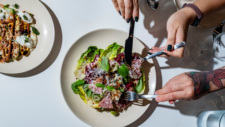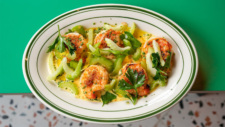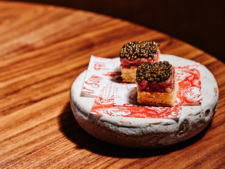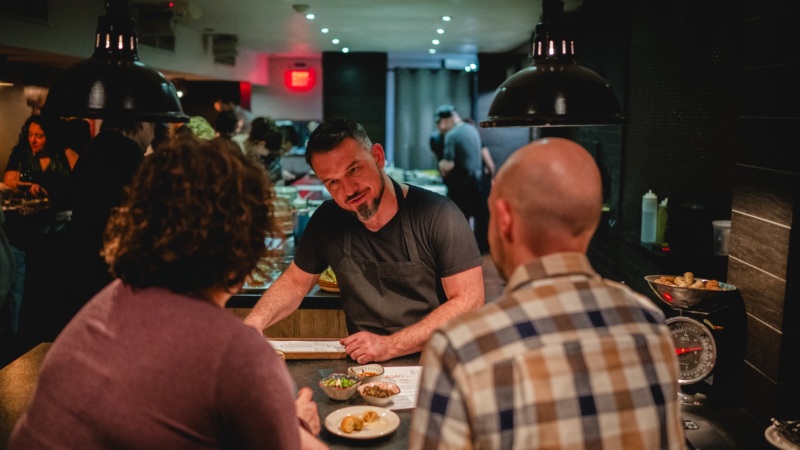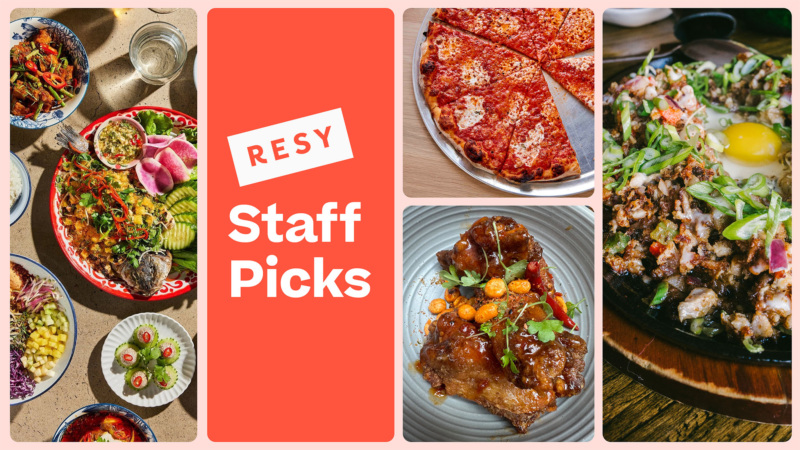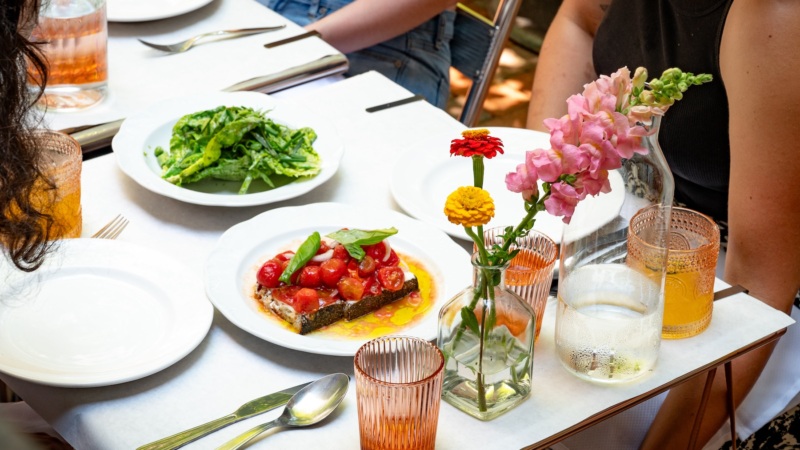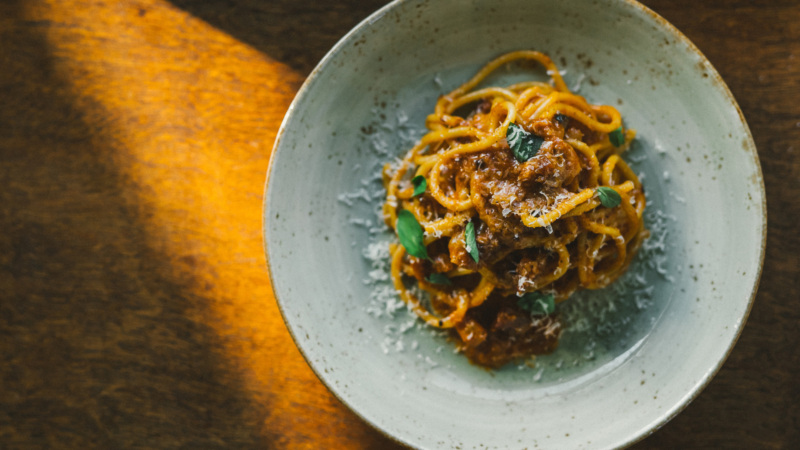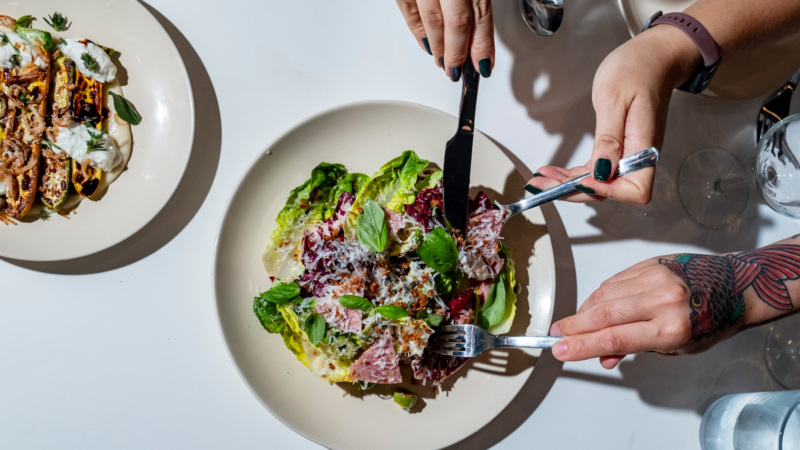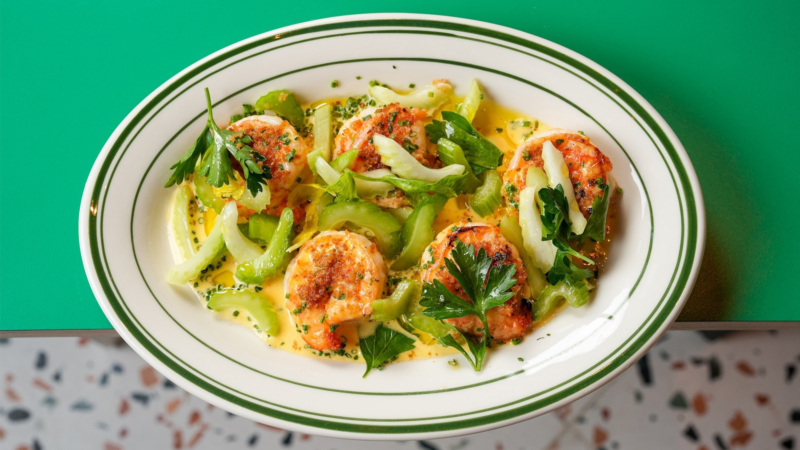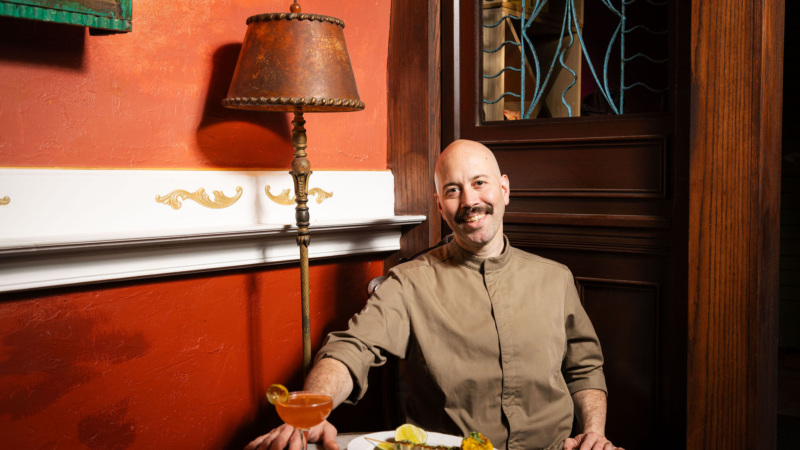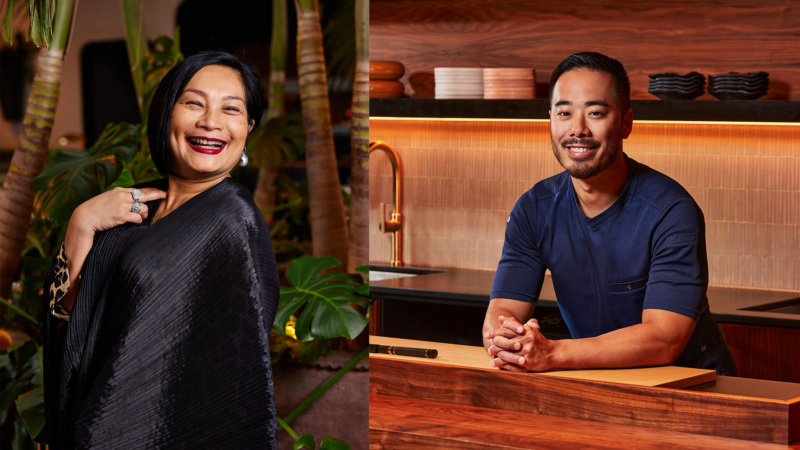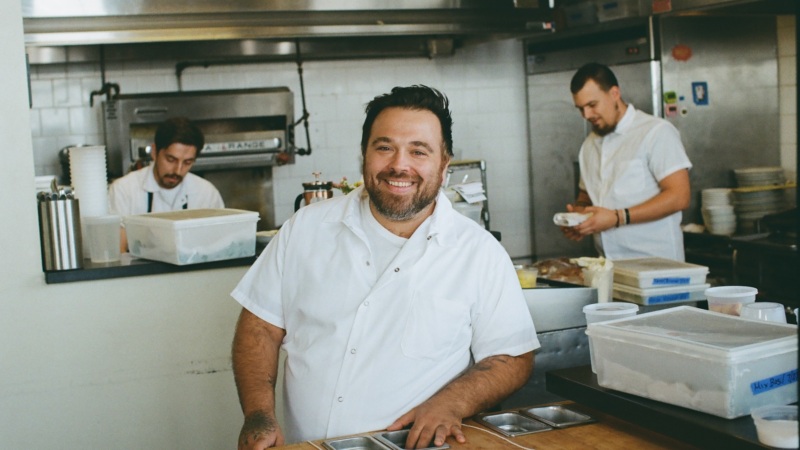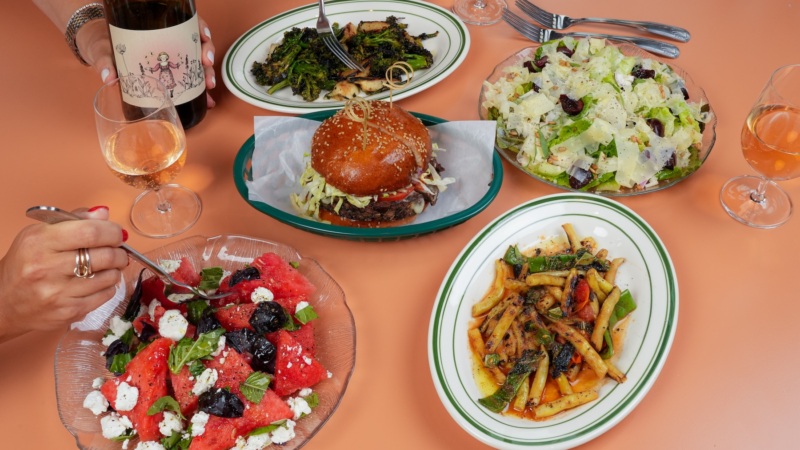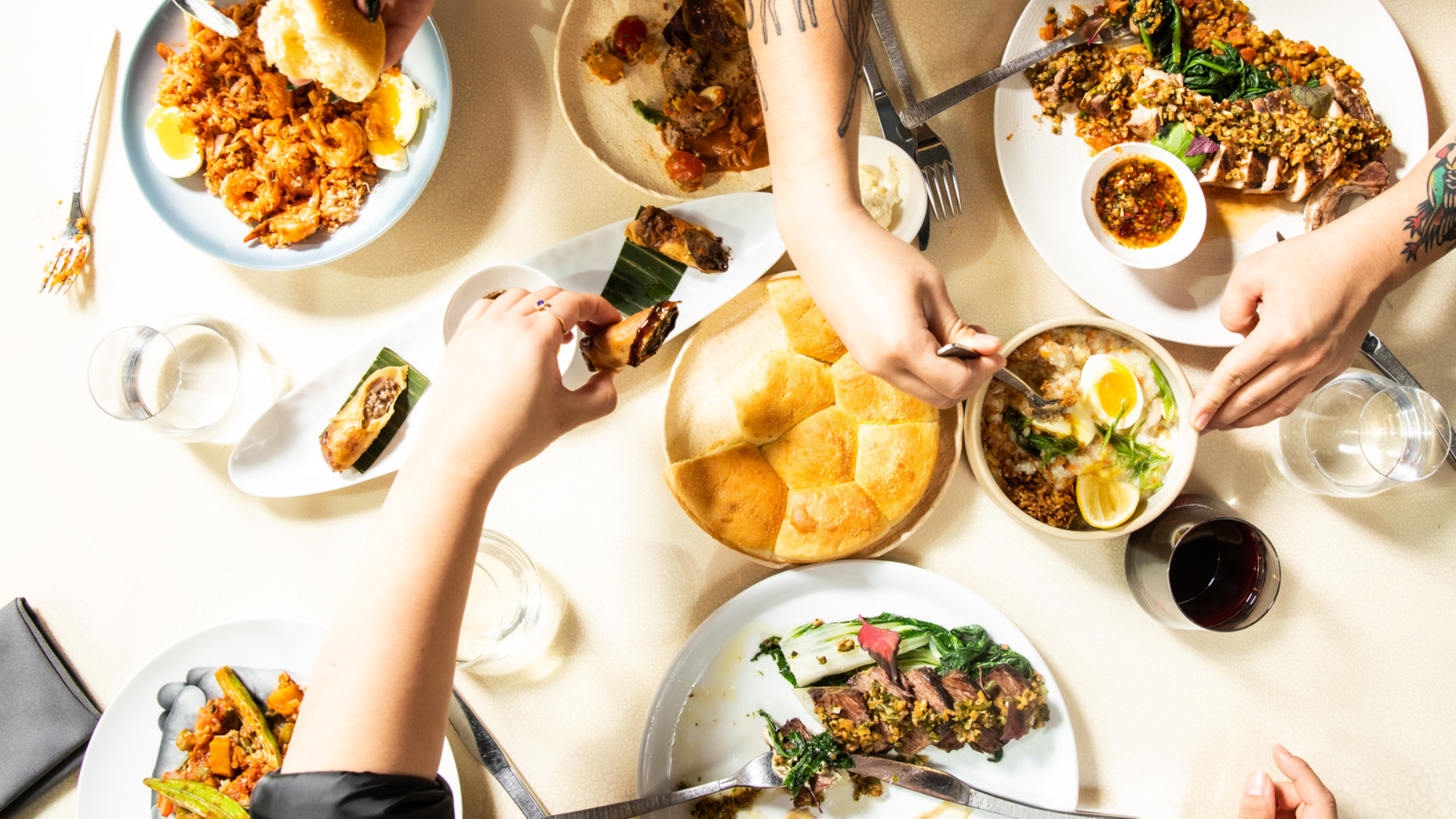
How Tabachoy Celebrates Filipino Food and Culture, in Five Essential Dishes
For a little more than a year, one of Philadelphia’s most perpetually packed restaurants has been putting a spotlight on a cuisine — and a culture — that doesn’t always get the attention it probably deserves. At Tabachoy, chef and owner Chance Anies and his team have taken it upon themselves to welcome you into their restaurant, a cozy 28-seater in tree-lined Bella Vista where the first thing you’re bound to notice is the smell of adobo in the air.
Before Tabachoy, Anies ran a four-foot-by-eight-foot food cart stationed outside Temple Hospital. And despite the challenges, which included a pandemic, he swiftly garnered a devoted following.
That’s followed him to Tabachoy, where every diner is meant to feel right at home, and all the staff floats freely between shared back- and front-of-house duties to attend to guests’ needs. Says Anies, “Filipino culture is 50% hospitality, 50% food.” The dining room is vibrant and often adorned with numerous BYOB wine bottles from excited guests. Tabachoy isn’t just a place to enjoy delicious food; it’s a space where guests are warmly welcomed like family, and conversations flow freely and last hours. “I joke with people that the vibe I’m going for is, you wouldn’t be surprised if we asked you to come back and do your own dishes … but at the same time, we would never do that, right?” he jokes.
Anies describes his upbringing as non-traditional, and the food on the menu reflects the food he grew up eating, like pork adobo made with balsamic vinegar instead of white vinegar, inspired by his dad’s version, himself a chef of 25 years. His dishes were crafted based on the available ingredients, without Hung Vuong Supermarkets or other Asian grocery stores widely available at the time. “As untraditional as it is, it’s super traditional to me,” says Anies.
Tabachoy’s significance extends beyond its numerous accolades and recognition. It serves as a cultural emissary, where Filipino heritage is honored, cherished, and shared with the world. This legacy is one that Tabachoy nurtures daily, fostering a profound sense of cultural pride in its patrons. Anies knows that running a small restaurant where the primary revenue is driven by the food rather than the buffer of alcohol sales, is a challenge. However, this only fuels his passion and strengthens his commitment to the menu as well as his desire to expand and evolve. He’s now exploring new avenues to share Filipino cuisine with a wider audience — whether it’s finding a partner to get involved, opening for lunch service, or even looking for a second location for Tabachoy. This is just the beginning.
Here’s a dish-by-dish look at five signature dishes from Tabachoy, as told by Anies.
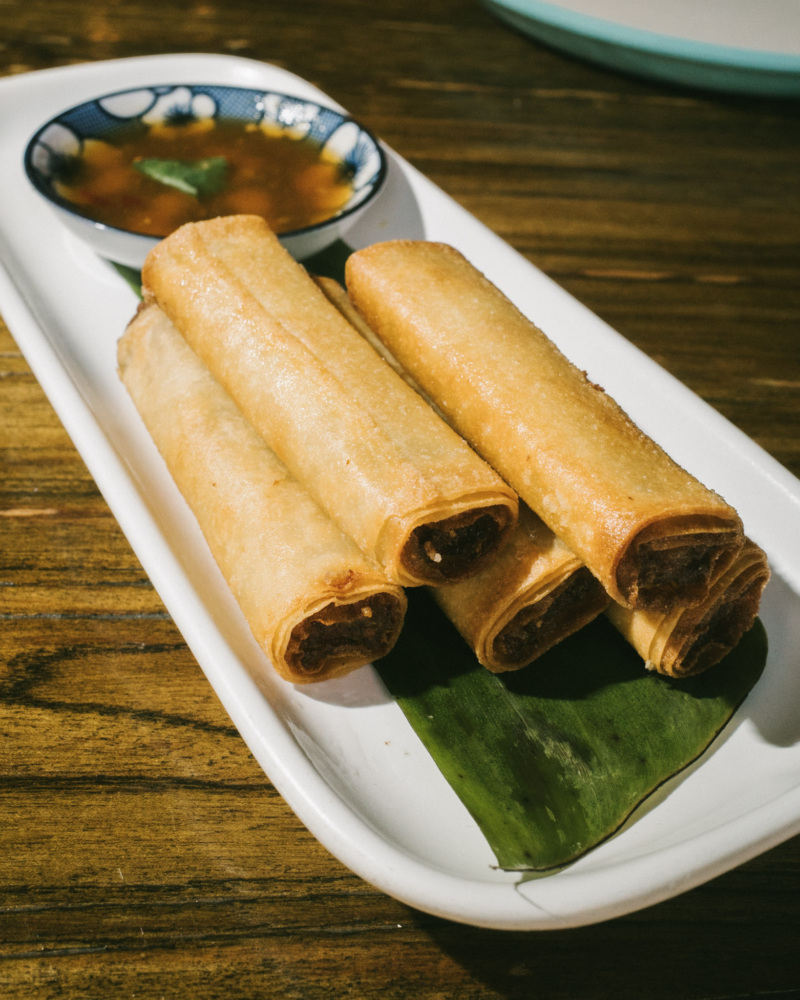

1. Lumpia
Pork spring roll with chile gastrique|Available Year-Round
“Our most-ordered dish on the menu is lumpiang Shanghai or lumpia fried pork spring rolls with chile gastrique. It’s like our play on Mae Ploy Thai chile sauce: sweet, a little sour, and very little spice. So, it’s just a nice little dipper. I’m very biased, but lumpia is the best of all Asian spring rolls. They’re delicious.”
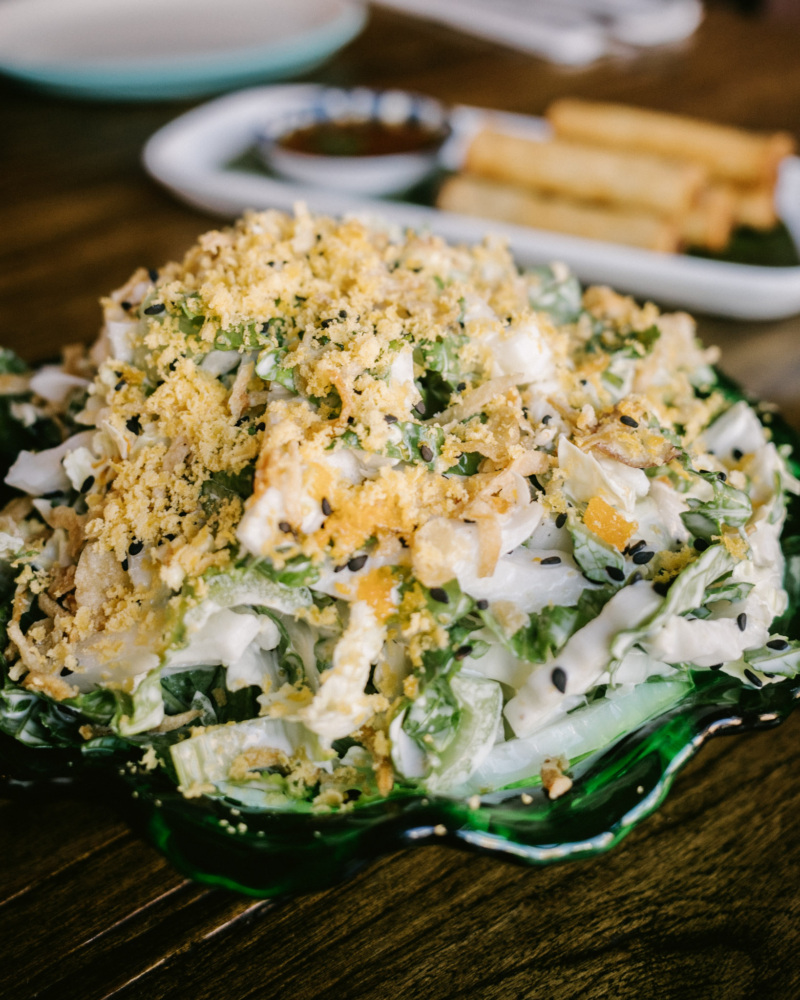

2. Tabachoy Caesar
Napa, mustard greens, bagoong Caesar, cured duck yolk, chile, fried shallot, scallion, sesame|Available Year-Round
“This is a dish I did not expect to gain as much love as it did. When we opened up the restaurant, I was like, ‘We probably should have a salad on the menu.’ I love Caesar salad; who doesn’t love Caesar? So we put a Caesar on the menu, broke down all of the great things about a Caesar, and then rebuilt it with a bunch of Filipino and Southeast Asian ingredients. One of the main differences is in our dressing; we use Filipino fermented shrimp paste, bagoong alamang, which is salty, funky, and a little bit sweet. That’s essentially our substitute for the anchovy in the Caesar dressing. From there, we add mustard greens and napa cabbage to make it a nice, rounded salad, and I can’t tell you how many people have told us it’s the best Caesar they’ve ever had.”
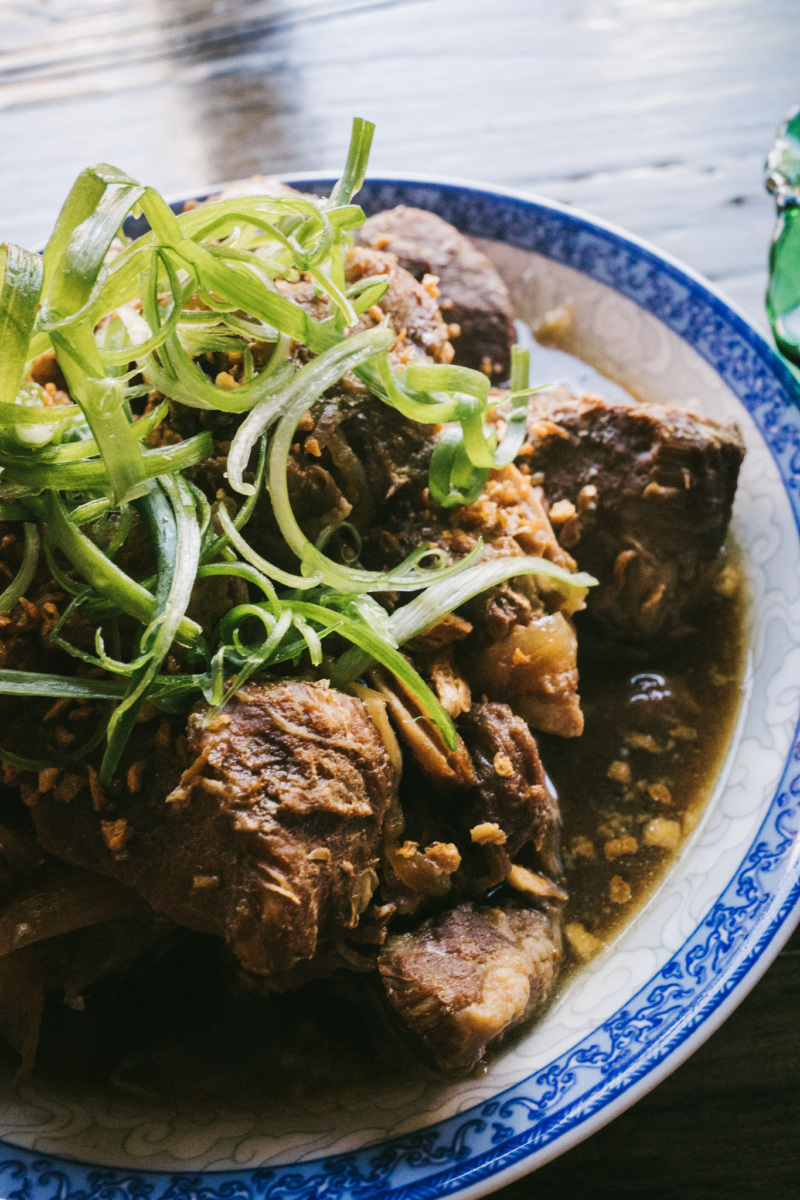

3. Pork Adobo
Braised pork shoulder, soy, vinegar | Available Year-Round
“This is the one dish that came over from our food truck to the restaurant that remains unchanged – I’d say it’s our bread and butter. Pork adobo is what helped get us into this position [of owning a restaurant]. It’s what I ate growing up with my parents, and it’s phenomenal. Adobo, in general, is soy sauce and vinegar braised. There actually is no recipe for adobo; it’s passed down from generation to generation Ours is pork shoulder, cubed, and then we braise in soy sauce and balsamic vinegar with a bunch of fish sauce, garlic, ginger, onions, and bay leaves. We cook that down until the cubes still hold their shape but are tender enough to cut with a spoon, which is a nice balance. It’s great on a hot day, great on a cold winter day. That, with a bowl of jasmine rice, you could drink the broth; it’s so great.”
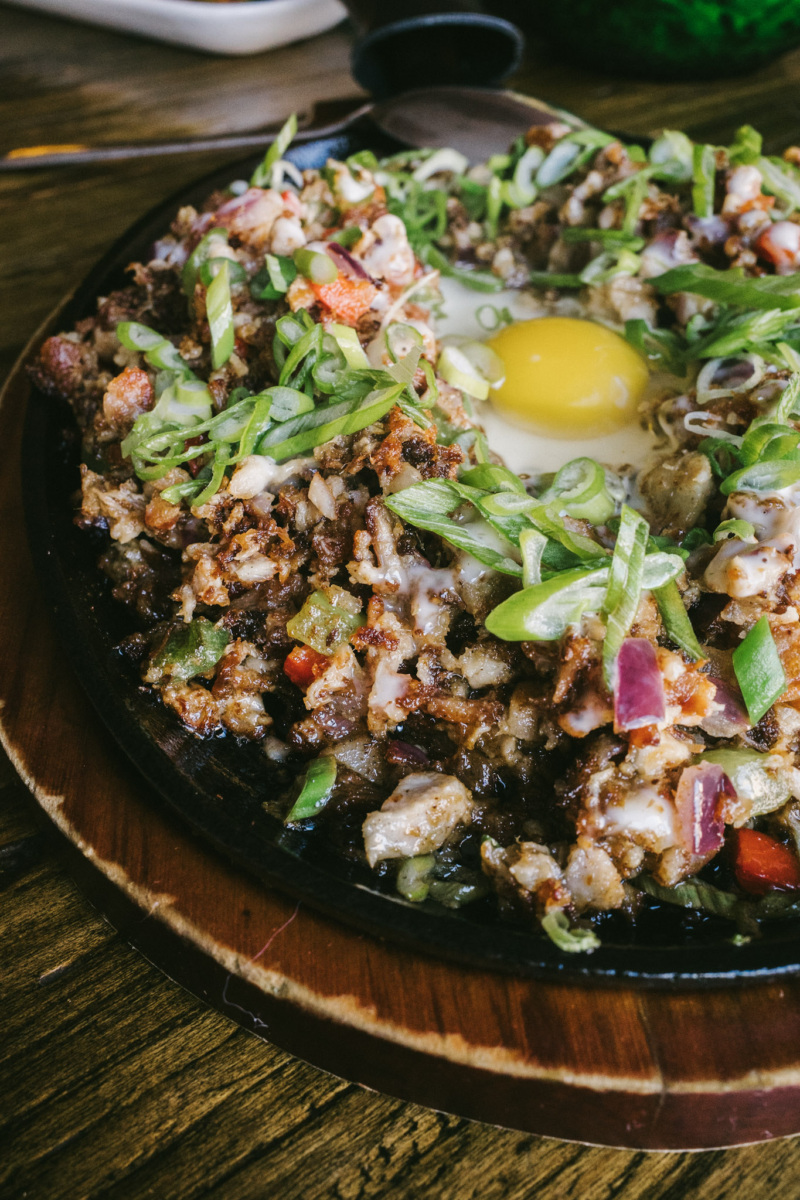

4. Pork Sisig
Minced pork belly, lime, bell peppers, chile, fried egg | Available Year-Round
“I always say we’re like pork professionals. Our logo is a pig, so we better get the pork dishes down well. So, it’s minced pork belly. And it’s got a bunch of garlic, red onions, red and green bell peppers, and a little bit of Thai chile in there. We put it onto a sizzle plate and crack an egg right onto the hot plate. Then we put a bonito mayo on top, and then a bunch of citrus as it walks out the window. My first restaurant job was at Chili’s, and I always loved bringing out the fajitas and how they sizzled as they walked through the dining room. I always told my staff that that’s exactly how I want this sisig to walk out. I want it to be loud. I want it to be noticeable when [the server] walks by … and then you just break the egg in the middle and eat it. Mix it all up, and it will continue to cook. That with as cold of a beer as you possibly can get is a phenomenal meal.”
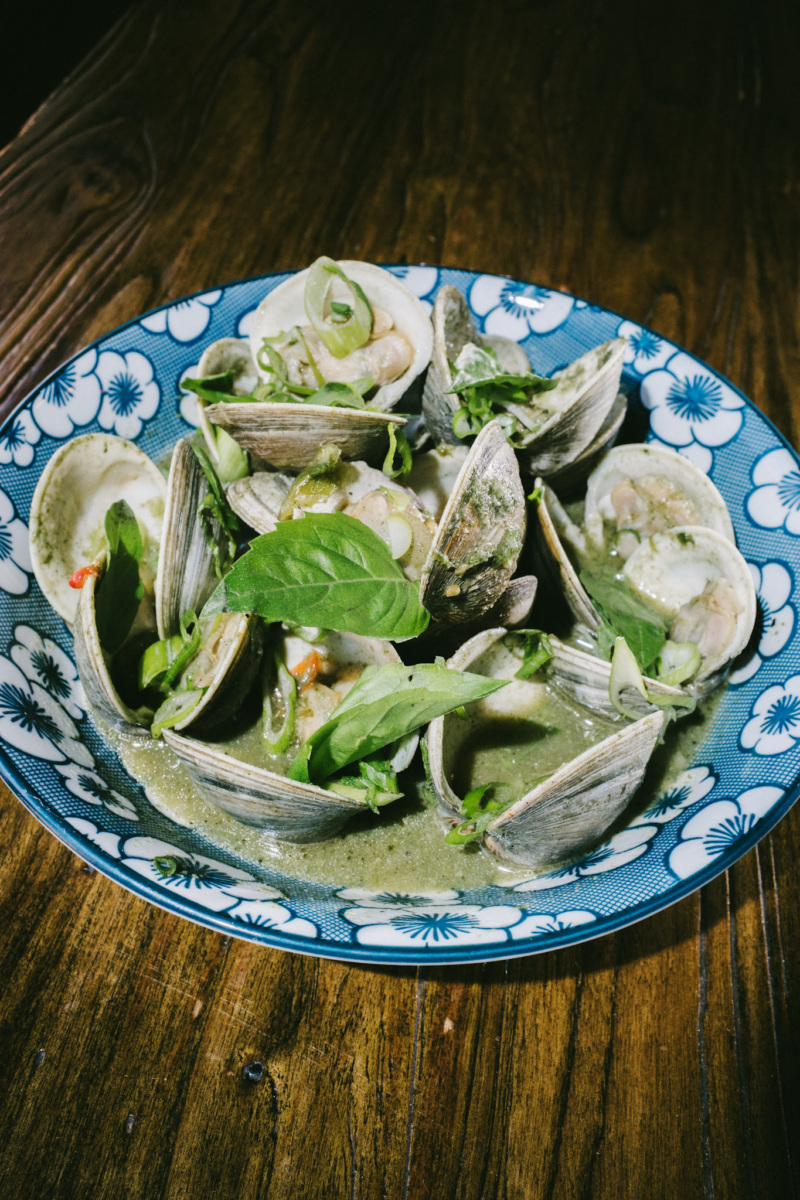

5. Ginisang Halaan
Littleneck clams, salsa verde, garlic-chile butter, lemon | Seasonal
“We have a handful of dishes on our menu that we swap out every six to eight weeks, and this is one of them. We cook the clams in an herb broth made out of all the extra herbs and their stems that we have in-house and a bunch of aromatics. Then, we cook the clams in that broth. We crash it with a salsa verde, which is tamari, fish sauce, brown sugar, lime juice, and a bunch of herbs like cilantro and scallions. Then, we top it with a compound butter of garlic and chili at the end. For this dish, you gotta like clams. You gotta like seafood. It’s a briny, bright dish, essentially a green clam. Most of the time, I’ll advise people to get the garlic rice. But for this dish in particular, I’ll say jasmine rice because I don’t want anything to mess with the broth. It’s a really nice dish that’ll probably be on for a while.”
Discover More

Stephen Satterfield's Corner Table




